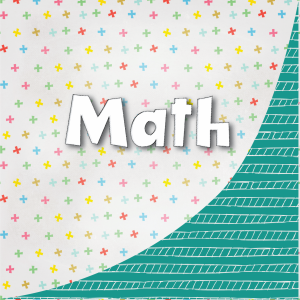 Your child has math homework, and it looks nothing like what you learned in school. Instead of a multiplication problem with numbers stacked on top of each other, there are rectangles filled with triangles and confusing instructions about something called “The Lattice Method.”
Your child has math homework, and it looks nothing like what you learned in school. Instead of a multiplication problem with numbers stacked on top of each other, there are rectangles filled with triangles and confusing instructions about something called “The Lattice Method.”
Does this scenario sound familiar? You’re not alone! For many parents, this “new math” or Common Core math looks strange, ridiculous, and time-consuming. But there is a method to the Common Core madness (or math-ness).
Common Core math is not about solving problems as quickly as possible, but it is about helping kids develop “number sense” or a true understanding of how numbers work and why even abstract things like common denominators actually make sense.
Another thing Common Core teaches kids is that there is not just one right way to solve a math problem—there can be many ways. Our children learn that numbers are flexible things made up of other numbers. They can rearrange numbers in a way that makes it easier to solve problems. They can draw pictures. They can use common sense. They can estimate.
Think about the last time you had to figure out a tip in a restaurant. Did you get out a piece of paper, line up all the numbers and use an algorithm to figure out what you needed to pay? Or did you round the numbers up or down--or maybe just double the tax? Most of us grown-ups use our number sense every day to figure out what we need. Kids learning Common Core math are learning this same kind of everyday mathematical thinking—just at an earlier age than most of us did.
Plus, the Common Core approach helps students who learn visually, and this is a huge number of students. If you see a problem on your child’s homework that involves a number line, chart, tape diagram, or lattice, instead of getting frustrated that you aren’t presented with the algorithm you learned in school, try to see it as a complement to that algorithm.
One myth about “new math” is that kids are not learning basic math skills like how to add two big numbers together by lining them up vertically. The visual approaches in Common Core help kids understand why they need to do things like carry a one when adding two numbers. Kids still learn the “old way”; now that way is explained and combined with more options.
Common Core is probably here to stay, and our kids don’t think it’s weird. We might think it is hard and strange, because this is not how we learned math, but there are lots of resources to help us learn about, and maybe even appreciate, this new way of learning.
One great resource for parents, especially parents of kids in Grades 1-6, is Instructional Coach Duane Habecker’s YouTube channel. He has created videos on a huge array of topics, including just about every module and lesson in the Eureka Math/Engage NY curriculum that many Arizona schools use. Watch a few of his videos and you may realize very quickly that “new math” isn’t so strange after all. In fact, you may find yourself using the lattice method the next time you have to multiply!
For more help with Common Core math, visit:
TumbleMath: K–6 eBooks
Read over 100 math-based books to level up those math skills! Each book focuses on math specialties from counting to geometry, with optional quizzes to verify the skills learned. Many are connected to Common Core standards. Note: These books are not available for download and will require wifi or data use.
Visit Learn at Home for even more great resources, including:
- Free online tutoring
- Online tools available 24x7x365
- Recommended items from our collection that you can pick up curbside



